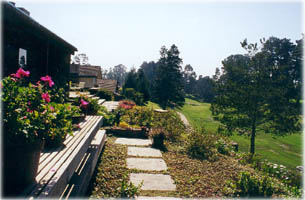community solar access

Solar access is the availability of (or access to) unobstructed, direct sunlight. Your access to sunlight becomes important if you use solar energy for space heating (and cooling), water heating, electricity, and/or daylighting.
Solar access issues emerged in the United States initially as a means by which landowners could attempt to protect their "access," or use, of solar radiation from present or future impairment. For example, a laundry with solar water heater collectors on its roof could legally alter any nearby structural development that could cast a shadow on the collectors and negatively affect system performance.
Early efforts to protect solar access took the view that every landowner's right to natural sunlight deserved protection. It was later realized that broad solar access substantially benefited the entire community in many ways. Energy/cost savings, comfort, construction cost savings, enhanced market value, future solar energy utilization potential, and aesthetics were all improved.
Several communities in the United States have developed solar access planning guidelines and/or ordinances. Data gathering, policy determination and development, and integrating new and/or existing statutes with solar access are necessary steps in the process. Zoning is a common mechanism used to protect solar access.
Solar landscaping
It's important to encourage compatibility between landscaping, shading, and solar access goals. Studies by the Lawrence Berkeley National Laboratory estimate a 25–50% reduction in annual cooling energy consumption through well-designed landscape design. Additional benefits of energy-efficient landscaping include aesthetics, environmental quality, noise buffering, privacy, and spatial definition.
Solar building design
With optimum orientation, it is much easier to design buildings to incorporate solar features, such as passive space heating and cooling and daylighting. Many solar design strategies are highly cost-effective when incorporated into the initial building design. This typically reduces costs for initial capital investment in the building heating and cooling equipment, and ongoing operating costs.
The City of San Jose, California, for example, precisely describes what constitutes a solar access dwelling unit. There, the amount of shade on the dwelling unit defines its level of solar access. According to the City of San Jose, shading from a structure and/or vegetation must not exceed specific amounts.
Solar energy systems
Unobstructed access to the sun is necessary for the optimum performance of active and passive solar energy systems. There is generally no guarantee a solar system will always have unobstructed access to the sun. Every day, decisions about the built environment and landscape effect the future shading of existing or potential sites.
Solar access protection is clearly advantageous for the following systems in the associated locations:
Data gathering
A number of communities throughout the country have created solar access policies and regulations according to unique local situations. If a community wishes to develop a plan for protecting solar access, they must take a number of steps to achieve its goal.
If there are no local solar access laws, private citizens requiring access to sunlight may have to bear the cost of private solar access agreements through such devices as easements or restrictive covenants.
Legislative barriers
Zoning ordinances and building codes can create problems for solar access. Most pertain to the following:
The most important solar access regulation for subdivision development is a predominantly east-west street orientation. This promotes optimal building orientation for solar access.
